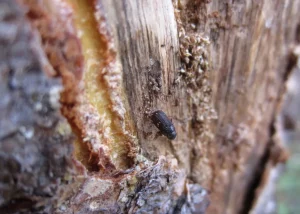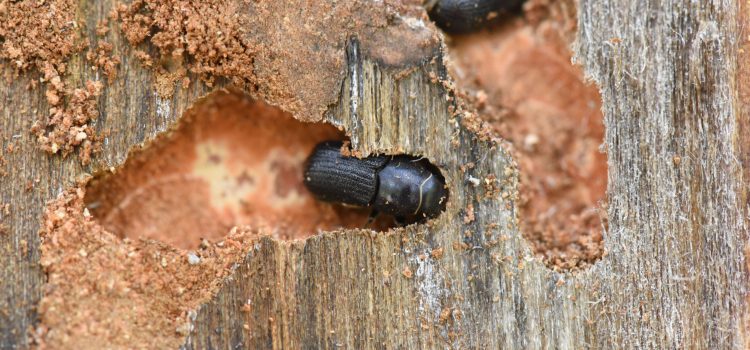
Stay Updated with Dr. Monica G. Turner’s Insights
In the enchanting world of forest ecology, where every tree and creature plays a vital role, a silent but powerful actor often goes unnoticed: fungi. Today, we embark on a journey led by the distinguished Dr. Monica G. Turner, a landscape ecologist renowned for her groundbreaking research on forest dynamics, disturbances, and climate change. Join us as we explore the captivating connection between fungi and bark beetle infestation, and how it impacts our beloved forests. Dr. Turner’s expertise will shed light on this complex ecological dance that affects us all.
The Fungal Kingdom Unveiled
Fungi: The Hidden Heroes of Our Forests
Fungi, often overshadowed by towering trees, are nature’s unsung heroes. Dr. Turner introduces us to the fascinating world of fungi and their symbiotic relationships with trees. Learn how these tiny organisms become key players in the forest ecosystem.
Fungi belong to their kingdom, separate from plants and animals. They come in various forms, from mushrooms to microscopic mycelium, hidden beneath the forest floor. This diverse group has a crucial role in forest ecology that’s often underestimated.
Mutualistic Relationships
Fungi are not solitary organisms but form intricate relationships with trees. Mycorrhizal fungi, for instance, establish a mutualistic association with tree roots. These fungi provide essential nutrients, particularly phosphorus, to the trees in exchange for carbohydrates. It’s a win-win scenario – trees receive vital nutrients, and fungi gain sustenance.
Dr. Turner’s research has unveiled the depth of these connections. “Fungi act as nature’s conduits,” she explains. “They transport nutrients, water, and even chemical signals between trees, facilitating their communication and cooperation.”
This underground network is essential for the health of the entire forest. It aids in resource sharing, disease resistance, and adaptability to changing environmental conditions.

The Bark Beetle Predicament
When Bark Beetles Strike
Bark beetles, though minuscule, can wreak havoc on forests. Discover the destructive potential of these insects and the telltale signs of infestation that often go unnoticed until it’s too late.
Bark beetles, tiny insects measuring just a few millimeters in size, have a notorious reputation among foresters. They are, in essence, the forest’s silent invaders. When conditions are right, bark beetles reproduce at an astonishing rate, and their sheer numbers can overwhelm even the healthiest of trees.
Signs of Infestation
One of the greatest challenges with bark beetle infestations is that they often remain hidden until substantial damage is done. By the time a tree displays outward signs of stress or death, it’s usually too late to save it.
Early warning signs include the presence of tiny holes in the bark, resembling BB gun shots, which indicate the beetles’ entry points. Another clue is the accumulation of fine, reddish-brown dust near these holes, which is the result of the beetles excavating tunnels beneath the bark.
The Fungi-Bark Beetle Connection
A Dance of Life and Death
Here, Dr. Turner delves into the heart of the matter. Uncover how fungi and bark beetles engage in a delicate dance, shaping the fate of forests. Understand the mechanisms behind this interaction and its impact on forest health.
As we navigate deeper into the forest’s mysteries, we stumble upon an intriguing and complex relationship between fungi and bark beetles. It’s a dance of life and death that ultimately influences the fate of entire ecosystems.
The Attack Begins
When bark beetles attack a tree, they don’t come alone. These tiny invaders bring with them a host of fungi, known as “ambrosia fungi.” As the beetles burrow into the tree’s inner layers, they introduce these fungi into the tree’s vascular system.
These fungi play a sinister role, aiding the beetles in breaking down the tree’s natural defenses. They help convert the tree’s defenses into a suitable habitat for both the beetles and the fungi themselves. This partnership between beetles and fungi effectively turns a living tree into a breeding ground for the next generation of beetles.
Fungi’s Response
But this story doesn’t end in devastation. Fungi, often seen as accomplices in this drama, can also play a vital role in mitigating the damage. “It’s a complex interplay,” Dr. Turner explains, “where fungi can switch roles depending on the circumstances.”
Some fungi have evolved mechanisms to resist the invasion. They produce compounds that are toxic to the beetles, hindering their colonization. Additionally, certain mycorrhizal fungi, which form symbiotic relationships with trees, can enhance the tree’s resistance to bark beetles.
Ecological Resilience: Fungi’s Role
Recovery and Resilience
Amidst the chaos, nature finds its way back to balance. Learn from Dr. Turner how fungi play a pivotal role in the recovery and resilience of forests in the face of bark beetle infestations.
Forests, despite the challenges they face, have a remarkable capacity for resilience. This is where fungi, often seen as both the culprits and the saviors, come into play.
Facilitating Recovery
Fungi, with their intricate connections to trees, facilitate the recovery of a forest after a bark beetle infestation. They contribute to the decomposition of dead trees, recycling nutrients back into the soil. This nutrient cycling is essential for the growth of new trees, promoting forest regeneration.
Moreover, mycorrhizal fungi continue to support the surviving trees, helping them access nutrients and water more effectively. This support system ensures that the forest can rebound and regain its ecological balance.
The Latest Insights
Stay Informed
Stay at the forefront of forest ecology with the most recent updates and findings from Dr. Turner’s research. Explore cutting-edge strategies and promising solutions to mitigate the impact of bark beetle infestations.
In the world of ecological research, knowledge is continually evolving. Dr. Turner’s dedication to understanding the intricate relationships within our forests has yielded invaluable insights that shape our approach to forest conservation.
The Ongoing Research
Dr. Turner’s team continues to explore the dynamics between fungi, bark beetles, and trees. Their research aims to develop innovative strategies for mitigating bark beetle infestations while preserving the health and resilience of forests.
“We’re at a critical juncture,” says Dr. Turner. “Understanding these relationships is essential for the long-term health of our forests, especially in the face of climate change.”
Informative Table: Understanding the Fungi-Bark Beetle Relationship
| Aspect | Fungi | Bark Beetles |
|---|---|---|
| Role in Ecosystem | Vital decomposers | Destructive pests |
| Relationship with Trees | Symbiotic associations | Infestation and damage |
| Impact on Forests | Ecosystem stability | Forest decline |
| Ecological Resilience | Facilitate recovery | Erode resilience |
Comparative Table: Strategies for Mitigation
| Strategy | Fungi-Centric Approach | Traditional Pest Control |
|---|---|---|
| Effectiveness | Promotes ecological balance | Temporary pest reduction |
| Sustainability | Enhances forest health | Chemical-intensive |
| Long-Term Impact | Positive | Potential environmental harm |
| Cost | Economical | Costly interventions |
Conclusion
As we conclude our journey into the realm of forest ecology, we’ve unearthed the profound significance of fungi in the intricate web of life. Thanks to the expertise of Dr. Monica G. Turner, we’ve gained a deeper understanding of the vital role fungi play in mitigating bark beetle infestations and fostering ecological resilience.
Stay connected with the latest developments in this field, and remember that in the whispering world of nature, fungi are the silent heroes that safeguard our forests. As we move forward, let us cherish and protect these fragile ecosystems, for they are the lifeblood of our planet.
Dr. Monica G. Turner:
A distinguished landscape ecologist known for her extensive research on forest and landscape dynamics, Dr. Turner’s expertise is grounded in decades of experience. Her work on disturbances and climate change provides invaluable insights into the fragile balance of our natural world.










